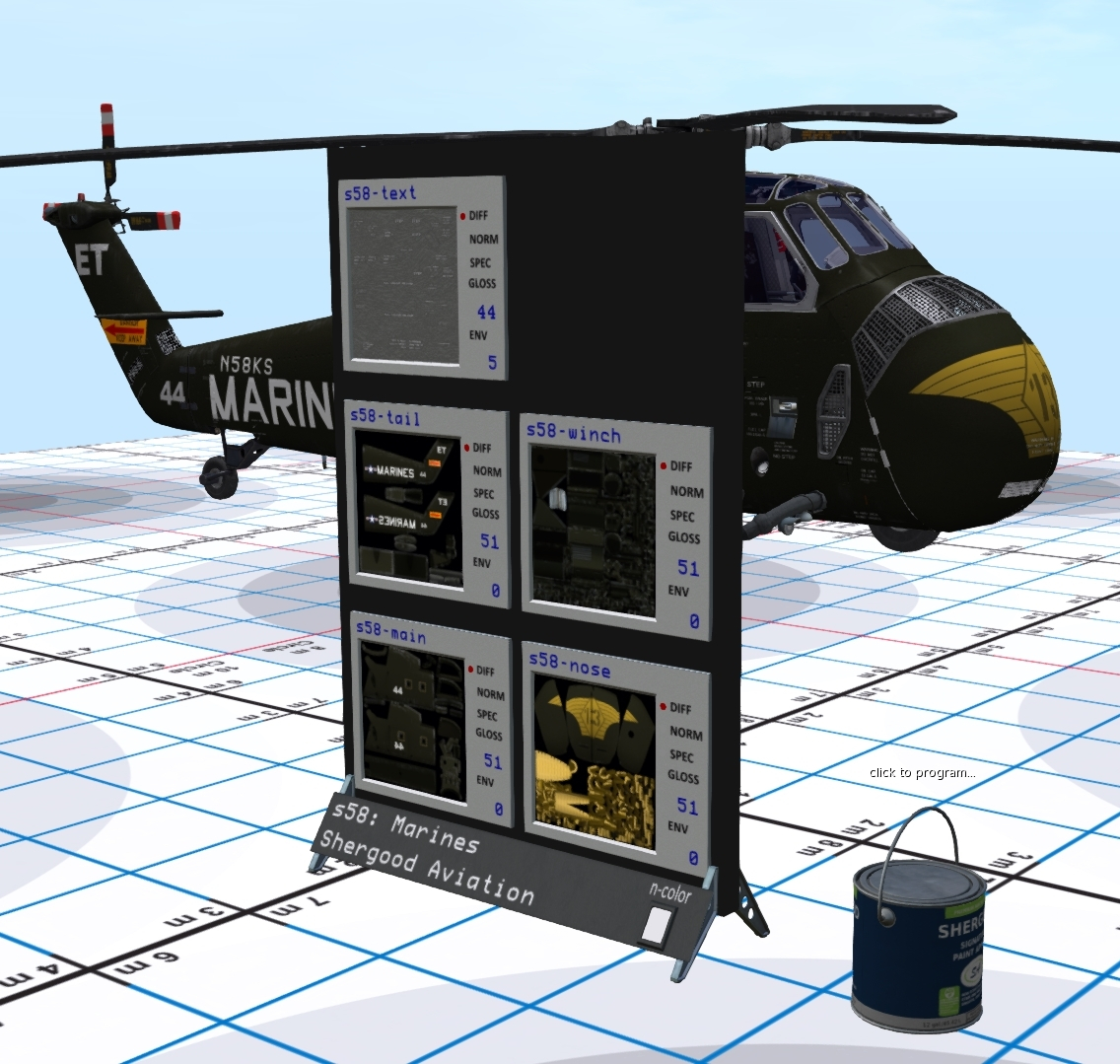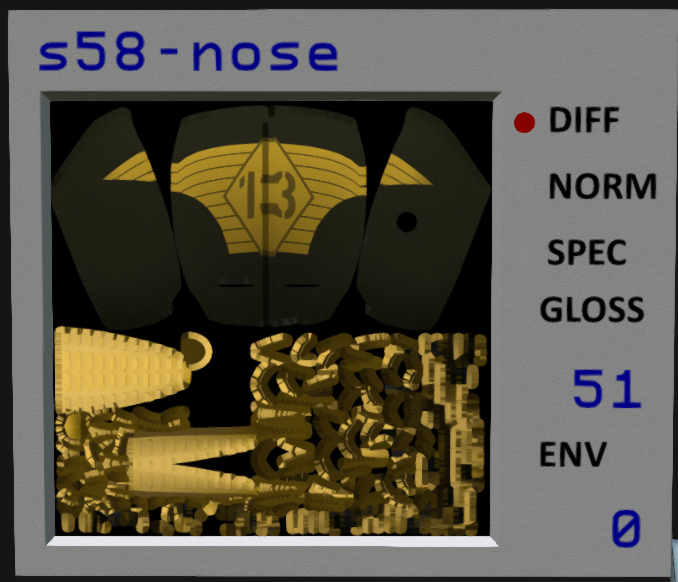Difference between revisions of "Paint Wizard"
(→Paint Configurations) |
(→Selecting a Configuration) |
||
| Line 20: | Line 20: | ||
Use the "NEXT>>" and "<<PREV" buttons to page through the selections. Once you select a configuration, the Paint Wizard will load the configuration, and configure the wizard for editing that paint. Selecting the ":RESET:" option will reset the scripts and load any newly added configurations. | Use the "NEXT>>" and "<<PREV" buttons to page through the selections. Once you select a configuration, the Paint Wizard will load the configuration, and configure the wizard for editing that paint. Selecting the ":RESET:" option will reset the scripts and load any newly added configurations. | ||
| + | |||
| + | Once a configuration is loaded, information about the loaded configuration will be displayed on the display bar. The top line will show the aircraft id and the name of the paint. The bottom line will show the name of the paint creator. | ||
== Editing a Paint == | == Editing a Paint == | ||
Revision as of 03:32, 4 October 2021
|
Paint Wizard |
The Paint Wizard can be used to paint any Shergood Aviation aircraft, and securely package paints from it for resale. The Paint Wizard kit includes the Paint Wizard itself, and a V3.0 Shergood Paint Bucket. Unlike the 2.0 paint kit system, no notecards or drop-in textures are used to configure it. It is programmed only from the Paint Wizard. Paints may be applied to an aircraft directly from the Paint Wizard, or through paint cans programmed by it.
1 Basic Operation
1.1 Selecting a Configuration
When you first rez the Paint Wizard, no active configuration is selected. The text "select configuration..." will be shown on the display bar. Click the display bar, to get a menu of possible configurations. A configuration is a combination of an aircraft, and a specific paint for that aircraft. The Paint Wizard comes with configurations for all SA aircraft at the time the kit was published. In addition, you may also add your own configurations. This will be described in Adding Configurations.
Use the "NEXT>>" and "<<PREV" buttons to page through the selections. Once you select a configuration, the Paint Wizard will load the configuration, and configure the wizard for editing that paint. Selecting the ":RESET:" option will reset the scripts and load any newly added configurations.
Once a configuration is loaded, information about the loaded configuration will be displayed on the display bar. The top line will show the aircraft id and the name of the paint. The bottom line will show the name of the paint creator.
1.2 Editing a Paint
Once a configuration has been loaded, the backboard of the Wizard will be populated with tiles, one tile for each texture used in the paint (see Figure 1). Each tile has the following parts:
- Label - The name of the texture is shown in blue at the top of the tile.
- Texture Box - A large box using most of the tile space below the label shows the texture that is assigned to that name.
- Material Selector - A selector on the right side of the tile with settings DIFF, NORM and SPEC lets you select whether to view the diffuse layer, the normal layer or specular layer for a texture.
- Specular Parameters - Two numbers labeled GLOSS and ENV let you select the Glossiness and Environment values for the specular layer.
To edit a texture, simply edit the texture applied to the Texture Box with the normal SL edit tools. To select the material layer, click on DIFF, NORM or SPEC to select the layer. A box at the bottom labeled "n-color" can be used to set the color applied to n-numbers on the aircraft.
1.3 Saving/Adding Configurations
Configurations are saved in notecards in the contents of the Paint Wizard. There are two types of notecards, paint configurations and aircraft configurations. Aircraft configurations describe the names of the textures that are part of a paint for that aircraft type, while the paint configurations describe a specific paint for an aircraft. Typically, only paint configurations will ever need to be managed by end-users.
1.3.1 Paint Configurations
A paint configuration notecard starts with the "*config:" and has the name of the paint configuration appended to it. By convention, the configuration name should include the code for the aircraft type, a dash, and the paint name. For example paint called "marine" for the "s58" would use a configuration notecard named "*config:s58-marine".
Each line in the notecard consists of a key and a value, separated by a "=". Keys without a "@" at the beginning are used for values that get special handling by the paint kit. Keys that begin with "@" are part of the paint description that is transmitted to the aircraft when the paint is applied.
The following special keys must be defined in any configuration notecard:
| Name | Description |
|---|---|
| name | The name of the paint. This is used in hovertext over any paint cans, and in the menu when choosing a paint to apply from the end-user's aircraft paint menu. |
| creator | The creator of the paint. This text is shown in hover text over paint cans. |
| aircraft | The aircraft for which this paint is designed. This will control which tiles are displayed in the wizard, and what aircraft can load the paint. It must be a valid aircraft type. |
| n-color | The color to apply to the tail number on the aircraft. It should consist of three comma-separated values between angle brackets for the red, green and blue values for the color. The values should be between 0 and 1. |
The following is an example of a minimum paint configuration:
name=Marines creator=Shergood Aviation aircraft=s58 n-color=<1,1,1>

